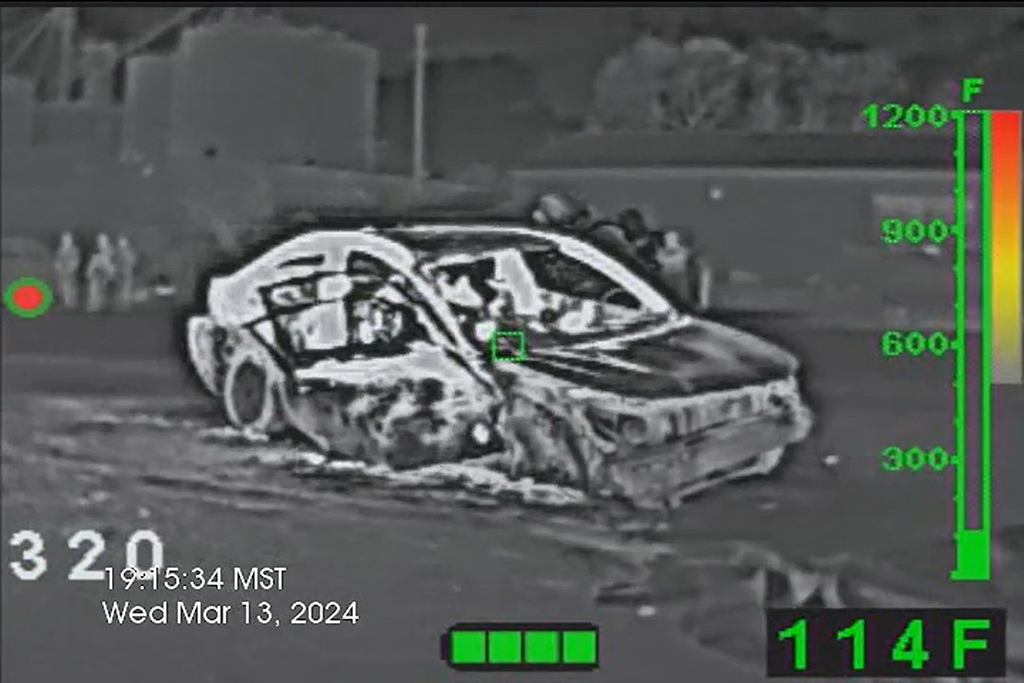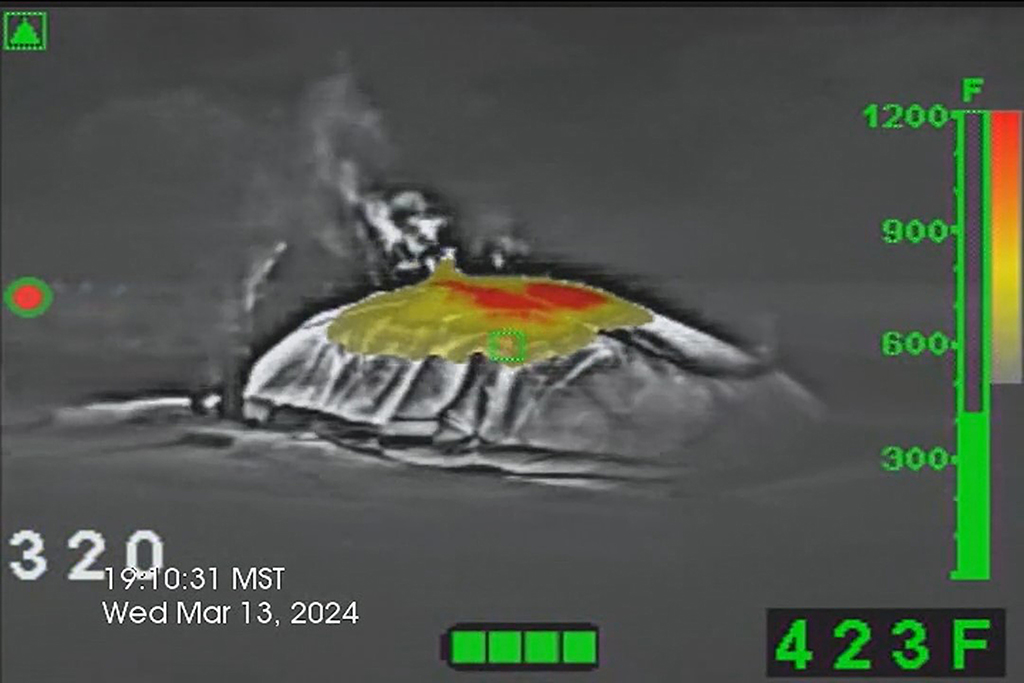

Today’s challenges for the fire services are getting more complex when responding to a motor vehicle incident (MVI), regardless of whether it is just a single vehicle on a back road, a multivehicle incident, or a major pileup on a major freeway or interstate.
Vehicles in travel are usually powered by gasoline or diesel, but with “green technology” becoming more popular, people are gravitating toward hybrid and electric vehicles (EVs). Diverse types of vehicles call for different thermal imaging (TI) tips and tricks. In this article, I will break down differences between the two vehicle types and how your TI can help you navigate through an MVI.
HYBRID VS. ELECTRIC VEHICLES
Hybrid electric vehicles are powered by an internal combustion engine and an electric motor, which uses energy stored in batteries. An example of this is the Toyota Prius. A regular hybridelectric vehicle cannot be plugged in to charge the battery. Instead, the battery is charged through regenerative (regen for short) braking by the internal combustion engine. There are plug-in hybrids available that are simply regular hybrids with greatly enlarged batteries designed to give them full speed operation on electricity alone for 20 to 50 miles. The difference is the plug-in hybrid’s battery is about a quarter the size of an EV’s, which makes it easier to plug in at home.
Electric cars, or EVs, function by plugging into a charge point and taking electricity from the grid. They store the electricity in rechargeable lithium-ion (li-ion) batteries that power an electricmotor, which turns the wheels. Electric cars accelerate faster than vehicles with traditional fuel engines, so they feel lighter to drive.
When arriving to on-scene calls in darkness, on a back road, or at a multivehicle pileup, do we really pay attention to what types of vehicles are involved? Usually not, as we are focused on the situation at hand and are prioritizing what needs to be done, such as patient care and patient extrication. This is where the use of your thermal imaging camera (TIC) can aid first responders who arrive on scene to help gather information regarding any potential hazards, etc.
- Assess the situation: Before approaching the vehicle, assess the situation from a distance of 50 to 75 feet to determine if there is an immediate threat to life or property. Look for any signs of fire, smoke, or hazardous materials and determine the types of vehicles that are involved through badging and design features.
1 A fire blanket applied to an EV fire for suppression. (Photos courtesy of Bullard.) - Use caution with TI: EVs can generate heat from their batteries, motors, and other components. This heat can be picked up by TICs and is crucial for identifying any risks of thermal runaway or fire hazards. Any temperature ranging above 250°F is a probable indicator of impending thermal runaway. TI may not accurately detect electrical fires in EVs, as they can be difficult to distinguish from heat generated by normal operation or battery charging. Some EVs may have high-temperature components, such as batteries or electric motors, that can be visible on a thermal image even when there is no fire. Use a higher resolution TIC to better distinguish between heat sources.
2 Assess the vehicle after an EV fire is extinguished. - Verify with other sensors and equipment: Use four-gas multiple sensors and equipment to verify the presence of hydrogen, hydrogen fluoride, carbon monoxide, and carbon dioxide as detectable gases.
- Treat EVs as potentially hazardous: When responding to an EV accident, assume that the vehicle’s electrical systems may still be active and potentially hazardous. Treat the vehicle as you would any other electrical hazard. Keep a safe distance from the vehicle and avoid touching it until you’re sure it’s safe to approach. Use full personal protective equipment (PPE) including self-contained breathing apparatus (SCBA).
- Safe approach: When arriving on the scene of an EV accident, DO NOT approach directly from the front or rear of the vehicle. Rather, approach from a 45-degree angle or the cornersof the vehicle until aggressive wheel chocks can be applied to prevent movement. EV vehicles may be ON and in DRIVE or REVERSE with no audible or visual warning. TICs can aid responders in assessing the safest approach paths through any smoke and fire conditions.
- Suppression: Use suppression methods that fall under the authority having jurisdiction. If no exposures are present or can be protected and there is no immediate threat to life safety, allow the vehicle to burn and do not attempt suppression. If suppression is chosen, use methods available: establish an adequate water supply, deploy fire blankets if available, etc.
- Post-incident monitoring: After the initial response, TICs should be used for monitoring purposes to detect any reignition or temperature changes that might indicate ongoing hazards. Battery temperature should be cooled until temperature is at or below 200°F, and vehicles should be monitored for a minimum of 45 minutes. The fire department should escort the tow transportation company transporting the damaged EV to a safe storage or staging area and conduct a final temperature assessment before departure.
- Training and preparedness: Regularly using TICs at EV-related incidents helps fire service personnel familiarize themselves with the unique thermal patterns of EV components, improving their readiness and response effectiveness.
When using a TIC, it is important for first responders to understand the typical thermal signatures of EV components and batteries, as well as any specific protocols or safety measures recommended for dealing with EV accidents. Integrating TI into standard operating procedures for motor vehicle accidents involving EVs can enhance safety for both responders and victims.
For any EV-related incident, contact the Energy Security Agency (ESA) for support services provided free to first responders globally. Visit www.ener- gysecurityagence.com or call 855-ESA- SAFE.
MANFRED KIHN is a 19-year veteran of the fire service, having served as an ambulance officer, emergency services specialist, firefighter, captain, and fire chief. He has been a member of Bullard’s Emergency Responder team since 2005 and is the company’s fire training specialist for thermal imaging technology. He is certified through the Law Enforcement Thermographers’ Association (LETA) as a thermal imaging instructor and is a recipient of the Ontario Medal for Firefighters Bravery. If you have questions about thermal imaging, email him at Manfred_ [email protected].



